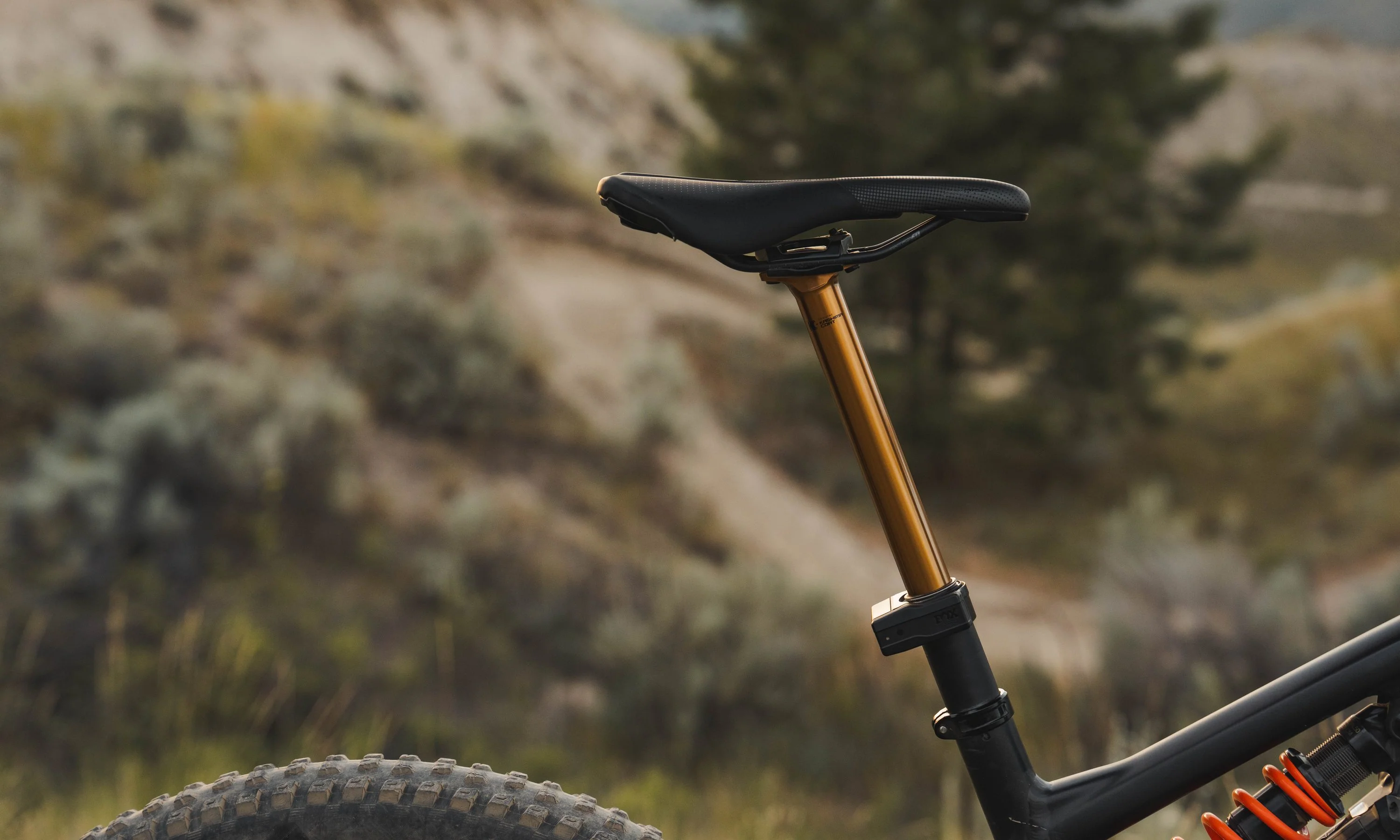I have a confession to make — I kill wheels and tires. Not because I like to. It just happens. I see a rowdy rock garden or a big feature, get excited, and charge in with reckless abandon. Then I wake up on the side of the trail, dazed, thinking, “Oh no, it’s happened again.” A slashed tire lies beside me, bleeding sealant. The ride is ruined.
For riders who like to go fast on rough trails, flat tires and damaged rims are an annoying and common part of mountain biking. For many riders, foam tire inserts are the solution.
Let’s take a closer look at what tire inserts are, how they work, the pros and cons, and why some of our riders use them, and some of our favorite insert options. That way, you can decide if inserts are worth adding to your bike.
What is a tire insert?
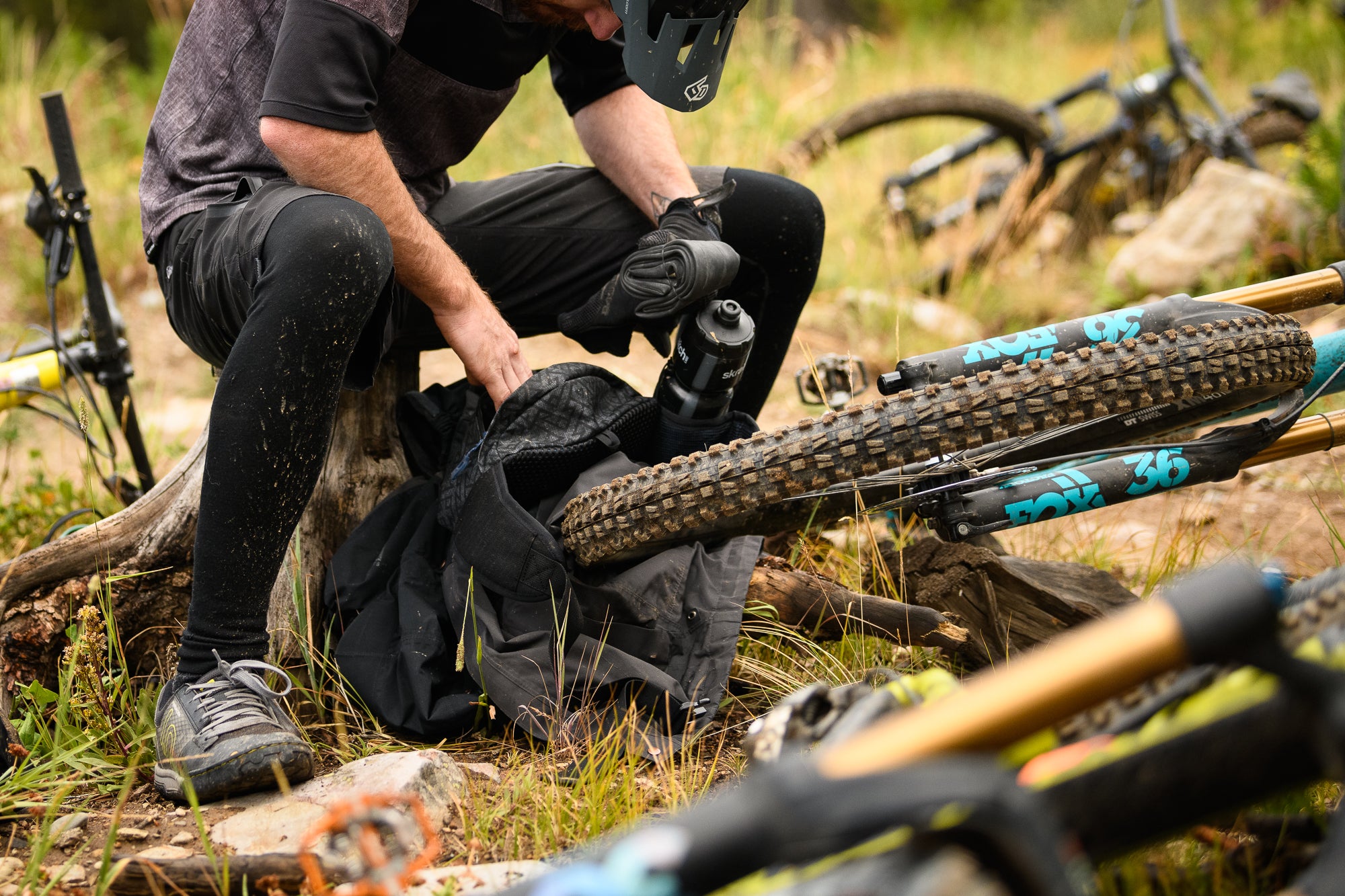 Don't be like my friend Stephen. Run an insert (or two).
Don't be like my friend Stephen. Run an insert (or two).
The story of the tire insert begins with the tire mousse. A mousse (French for “foam”) is a solid foam inner tube that originated in the world of off-road motorcycling to eliminate flat tires by replacing pressurized air. It never caught on in mountain biking. A solid foam tube is significantly heavier than air and the added rotational weight would make pedaling harder.
Also, tire pressure is critical to how your bike feels and performs. A mousse can only provide one “pressure.” If conditions require a higher or lower psi, you’re stuck with what the mousse gives you. Any air-filled set-up — tubes or tubeless — is easier to tune and adjust to achieve the desired tire feel.
A mountain bike tire insert essentially splits the difference between a full mousse and a full tubeless set-up. Most will sit against the rim and fills approximately half of the tire. But the rest of the tire is still filled with air. The tire is seated just like a standard tubeless tire. The remaining air chamber allows pressures to be adjusted to suit rider preferences. This saves weight and allows for tire pressure adjustment. 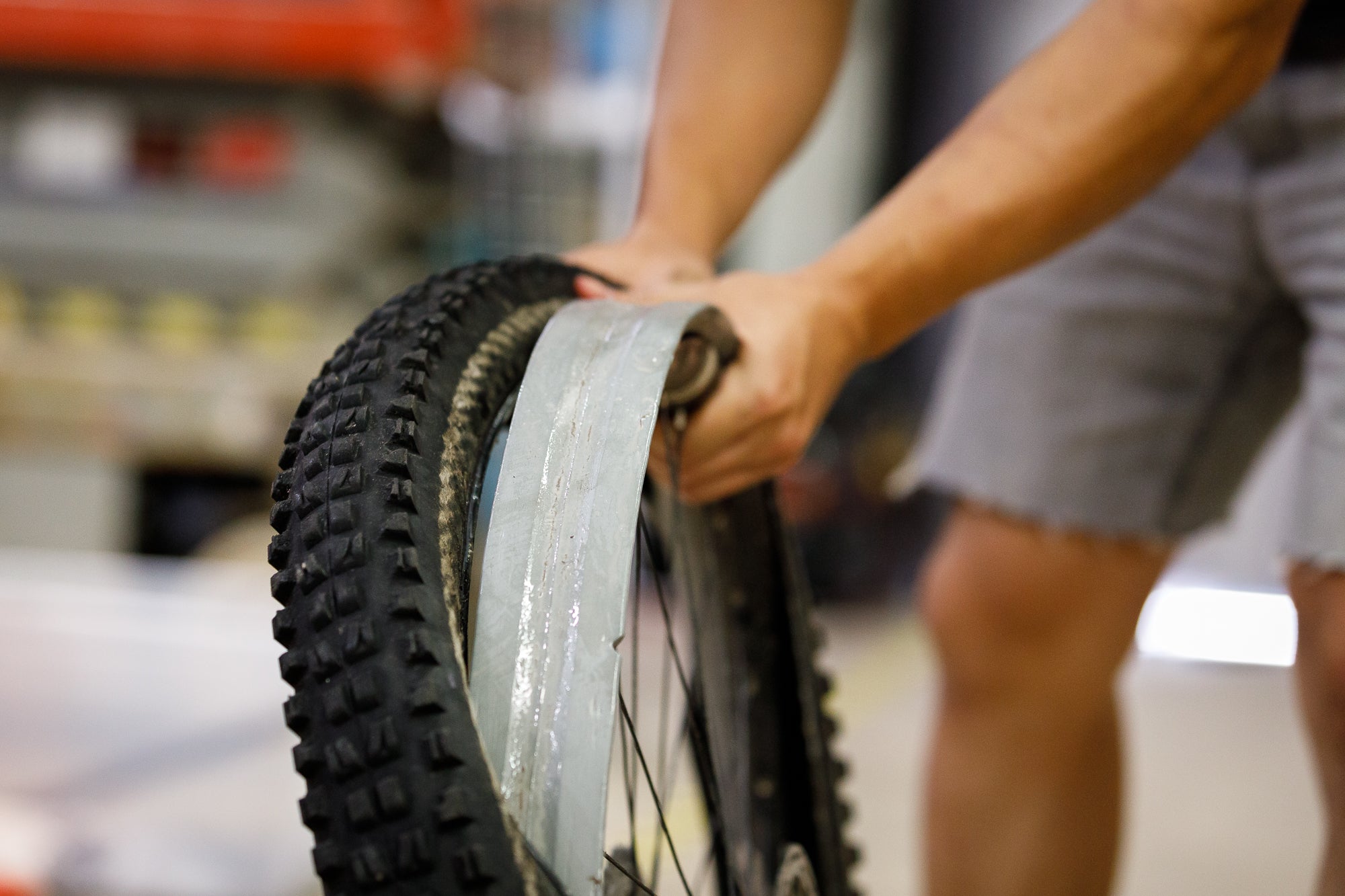
One of my CushCore inserts.
Skeptics criticize tire inserts for looking similar to pool noodles or other foam household products. The difference, however, is that good tire inserts are generally made from closed-cell foam. This foam is denser, more durable, and more impact-resistant. Most insert manufacturers select or develop specific types of foam to achieve specific ride characteristics. Closed-cell foam also resists absorbing fluids, preventing tire sealant from soaking into the insert.
How tire inserts work
Inserts have become more popular as modern riders and racers have pushed their equipment harder, descending faster on tougher terrain. On a mountain bike, it's easy to accidentally smash into an obstacles on the trail. Without an insert, the air in the tire compresses and the tire bottoms out against the rim. This can cut the tire, or the rim might get dented or cracked.
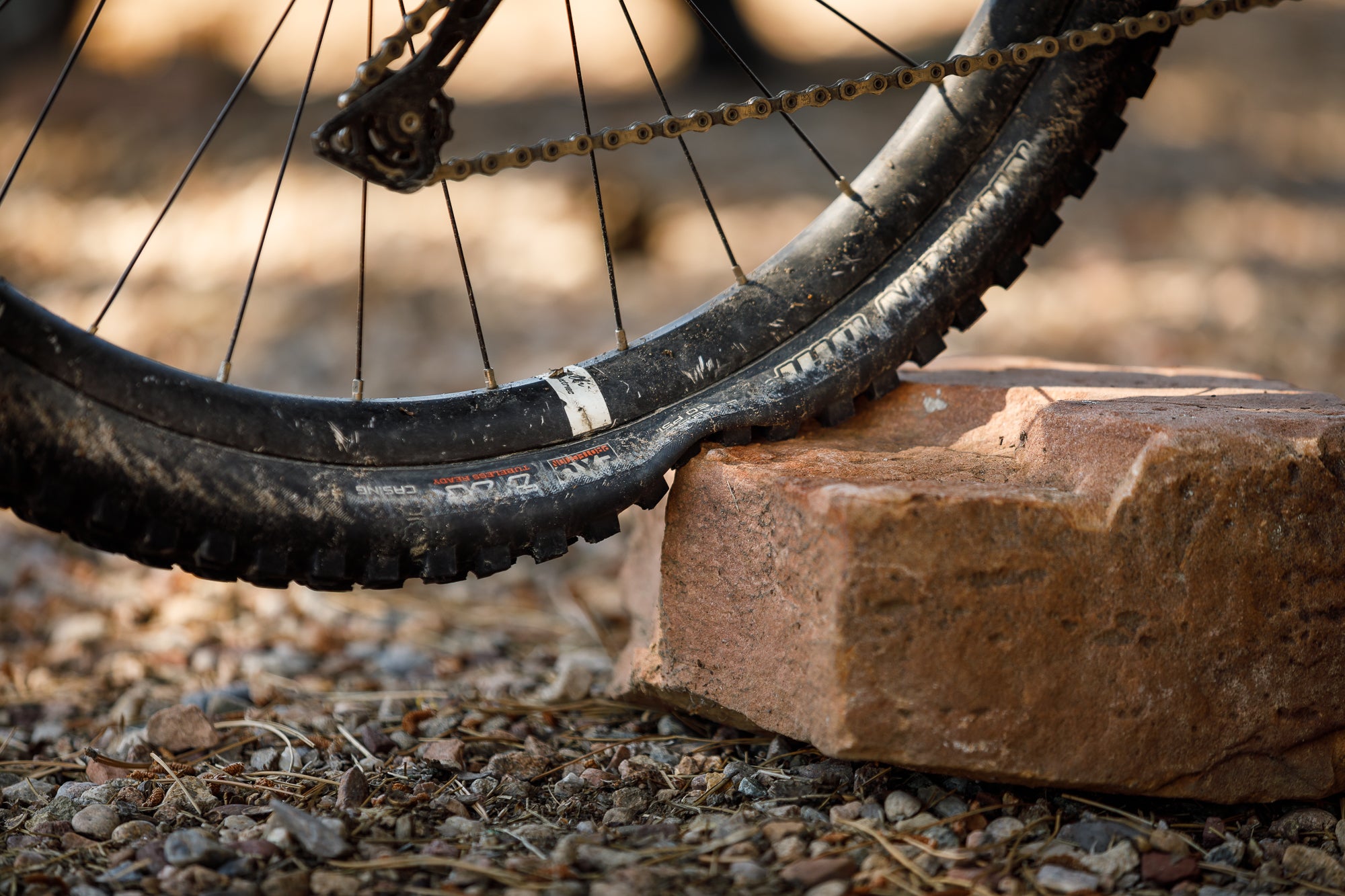
A foam tire insert acts as a physical barrier to prevent the tire from bottoming out against the rim. It absorbs the energy from impacts so, hopefully, your wheels and tires can roll away unscathed.
Because inserts take up air volume in the tire, they also provide some other benefits, such as increased sidewall support and tire damping, which will be explained further below.
The pros and cons of tire inserts
Pros
- Allows lower tire pressures
- Damped feel
- Sidewall support
- Rim protection
- Burp prevention
Cons
- Added rotational weight
- Potentially difficult installation and removal
- Can interfere with flat repair
- Cost
- Not 100-percent effective
Because enduro and downhill riders often exceed the limits of their wheels and tires, tire inserts can give them the confidence to ride aggressively without worrying about flats or rim damage. Many riders will only need an insert in the rear since the rear wheel supports the majority of the rider’s weight and is more susceptible to damage. However, many riders prefer riding inserts on the front and rear.

When examining my CushCore, it's easy to see where it took an impact and save my tire and rim.
In the past, riders have often turned to thicker tire casings, heavy-duty alloy rims, and higher tire pressure to protect their wheels and tires. Tire inserts, however, can allow riders to run lighter tires and rims because of the added protection. This can often offset the added weight of an insert by creating a lighter overall wheel and tire set-up with the same or better durability.
Some riders like using inserts to protect expensive, lightweight carbon rims, even if they aren't riding aggressively. Inserts can open up the option of lightweight carbon wheels to riders who might have been hesitant about riding them before.
Inserts also provide benefits beyond rim and tire protection. CushCore claims its insert provides a 12 percent smoother ride, 35 percent more sidewall stability, and improved suspension performance and reduced rolling resistance. Much of this comes from the fact that inserts allow riders to run lower tire pressures, improving traction and comfort.
Low tire pressures may cause unwanted sidewall flex in the tire during hard cornering. At worst, a soft tire could burp air when the tire bead momentarily separates from the rim. Many inserts press up against the inside of the tire, providing sidewall support during cornering and locking in the tire bead to prevent burps. This combination of low tire pressure, traction, and sidewall stability can allow riders to corner much more aggressively.
An additional benefit of inserts is the noticeably damped feel the foam provides over rocks, roots, and trail chatter. Inflated tires act like an undamped spring, so adding an insert to dissipate force improves how they respond to impacts. By smoothing out and quieting impacts and chatter, they can reduce rider fatigue, increase control, and conserve momentum through rough terrain. Some riders note that the damped feel of tire inserts can actually reduce arm pump and hand fatigue on long descents.
The two main issues for riders hesitant about adding inserts to their bike are added weight and the installation and removal process. Any foam insert is going to weigh more than just running air. The weight is placed in the worst place possible, at the very outside of the wheel. This added rotational weight will hamper pedaling and acceleration, and it can take away the snappy feel of a light and nimble bike.
Riders concerned with weight can ride without an insert, as long as they take good lines and avoid impacts that might overwhelm their wheels and tires. That being said, many high-level XC racers are now using more minimalist tire inserts. Vittoria's Air-Liner is around 100 grams lighter than CushCore Pro, and brands like Pepi’s Tire Noodle and Tubolight provide sub-100 gram insert options that have seen use in (and won) World Cup XC races. Flat tires can cost XC racers valuable positions and time. Any rider who is competitive and pushing the limits of their equipment can benefit from additional protection.
The second concern that scares riders off is installation and removal. Inserts like CushCore are notoriously difficult to install for first-time users. Through experience and practice, however, most novice bike mechanics should be able to learn the tricks and techniques to install an insert efficiently. I’ve gotten to the point where a CushCore only adds around 10 minutes to a tire installation or removal. Other inserts like Vittoria Air-Liner, Tubolight, Rimpact, and Huck Norris don't hug the rim as tightly, are much easier to install, and comparable to installing a tube.
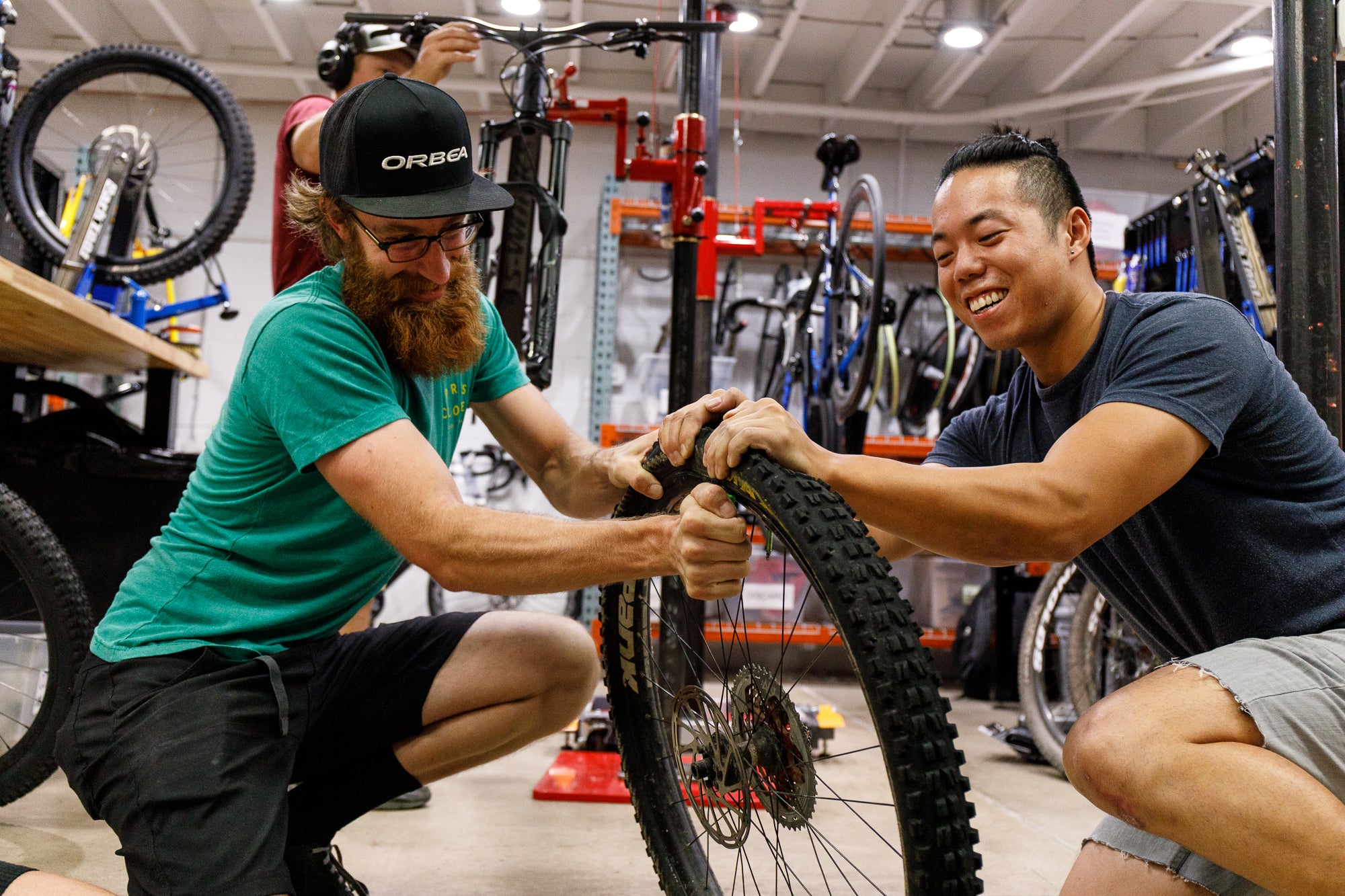
The first CushCore install can be hard. It takes practice to master.
Some skeptics complain that tire inserts are unnecessarily expensive (many sell for $100 or more) for being something as simple as a foam tube. Of course, it’s going to be cheaper to just inflate your tires with air. It’s ultimately up to you to determine if the price is worth it.
Though inserts can protect the rim and tire, they aren’t 100-percent effective. A heavier-duty insert like a CushCore will be more robust than a sub-100 gram option, but it’s not infallible. It is always still possible to cause damage if an impact has enough force to overcome the insert. Inserts also don’t protect from punctures and cuts that are caused by sharp objects in the trail. It’s possible to flat on a pointy rock and never come close to bottoming out the tire.
Of course, if you do flat with an insert, it adds more complication to the repair process. If a tire can’t be repaired with tire plugs, the insert will generally have to be removed to insert a tube. Some riders will leave an insert in the tire, use a tube with a long valve stem, and pierce the insert with the valve. Others will simply ride out on the insert with their tire deflated.
The Best MTB Tire Inserts
 We've tested tons on inserts here at TPC. I'll tell you right now, the vast majority of riders here prefer and use CushCore. When it comes to puncture prevention and rim protection, CushCore is the benchmark, and we really haven't found anything else that beats it.
We've tested tons on inserts here at TPC. I'll tell you right now, the vast majority of riders here prefer and use CushCore. When it comes to puncture prevention and rim protection, CushCore is the benchmark, and we really haven't found anything else that beats it.
[product-block handle="cushcore-pro-tire-insert-set"/]
That said, CushCore does have some drawbacks that make many riders look at other options:
- It's the heaviest insert option
- It's fairly expensive ($150 for a set)
- It's the hardest to install
Here's a breakdown of all the inserts I've tried:
|
Traits |
Inserts |
Best Use |
|
Most Protection |
CushCore Pro |
Enduro racing, DH, bike park |
|
Lightest weight |
Vittoria Air-Liner (S), Tubolight Evo SL/HD, Pepi’s Tire Noodle |
XC Racing, trail riding |
|
Best Compromise |
Cushcore XC, CushCore Trail, Rimpact Pro, Vittoria Air-Liner (M, L, XL) |
Trail riding |
If you're racing enduro or downhill, or riding lift access trails, I don't think there's any reason to use anything besides the full fat CushCore Pro. It adds ~250 grams per wheel and install/removal can be a nightmare for the uninitiated, but nothing else come close the the level of protection it provides. I use them myself for enduro racing and bike park riding.
[product-block handle="cushcore-xc-tire-insert-set-29"/]
That said, not everyone needs what CushCore Pro provides. If you want a middle ground option, I'd suggest CushCore XC. It sheds ~100 grams per insert, and I find it much easier to install and remove (though still harder than many options). There's also a brand new, slightly heavier CushCore Trail insert that slot in between the XC and Pro models for rider who want just a little more protection.
I also really liked Rimpact's Pro inserts and the larger (size M & L) Vittoria Air-Liner inserts. These were both super easy to install, provided a lot of sidewall support, and decent protection. For the majority of riders, I think these are the best options. I currently use CushCore XC on my downcountry trail bike.
[product-block handle="vittoria-air-liner-mtb-tire-insert"/]
For the weight weenies out there, there are actually great options that come in under 100 grams per insert. Vittoria's Air-Liner (size S) is the easiest insert to get here in the States. But I currently use Tubolight Evo SL for XC. They're so light (58 grams), I don't even notice that I have inserts when riding them. They're also all extremely easy to install because they fit much looser than most other inserts. Unlike CushCore though, they do seem to fall apart after a few seasons.
So Do You Need Tire Inserts?
 Run an insert if:
Run an insert if:
- You puncture tires or damage rims often.
- You like running super low tire pressure.
- You want additional damping to reduce fatigue and arm pump.
- Your local terrain has a lot of rocks and roots that can damage rims.
- You’re racing competitively and need to make it to the finish.
- You want extra insurance to protect expensive carbon rims.
- You like cool MTB tech.
Inserts aren’t for everyone. Some riders don't want the added weight. Others rarely have issues with wheel or tire damage, possibly because they live in regions with smooth trails or flat terrain that rarely gives them a chance to smash rocks at high speed. And of course, there will be riders who don’t want to deal with the additional work of setting up tires with inserts.
But for those who want to prevent damage to their wheels and tires, who want the added damping benefits, or who want maximum durability for racing or everyday riding, tire inserts are one of the best options currently available.
Do you run tire inserts in your MTB? Are you on the fence? What is your opinion, and which insert is your favorite? Let us know in the comments!




